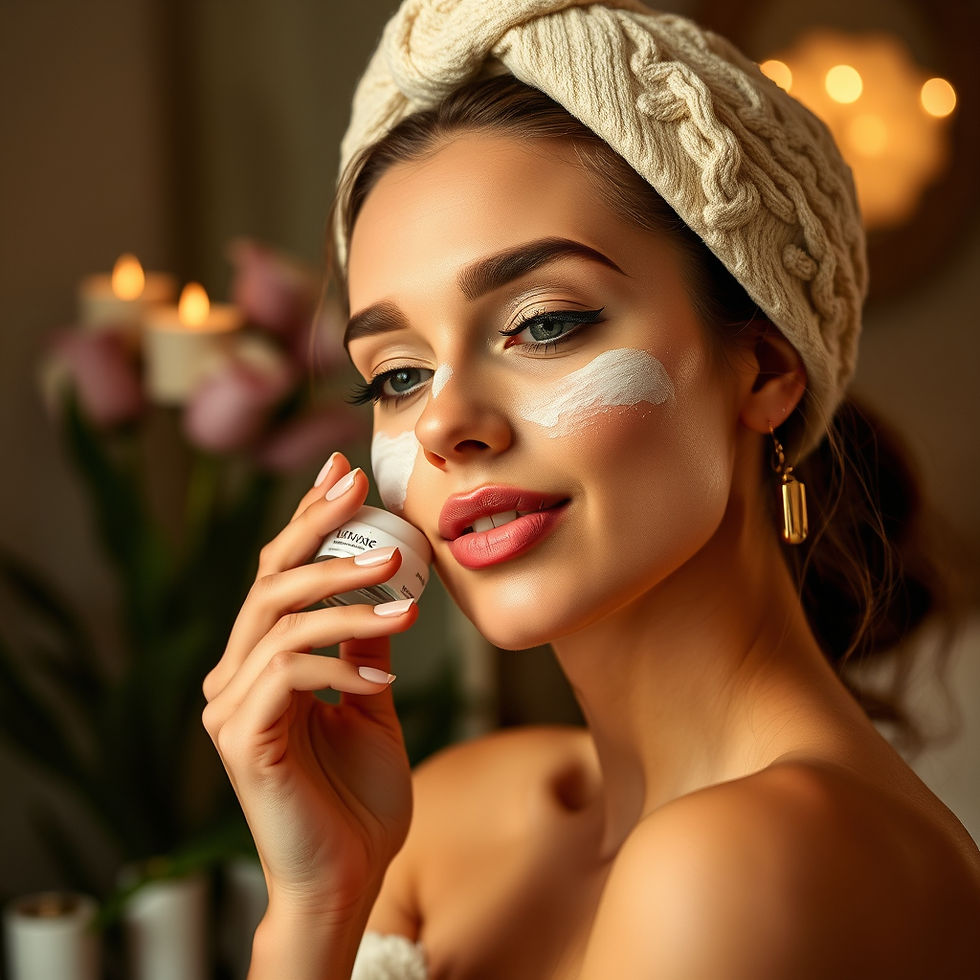Decoding the Price Tag: What Makes Luxury Skincare So Expensive?
- LUXERNN

- 1 day ago
- 4 min read

For anyone who has stared at a $20 moisturizer next to a $200 jar promising similar results, the question is inevitable: Is luxury skincare truly worth the splurge? The vast price disparity between mass-market and high-end beauty products often leads to skepticism. Are you simply paying for a fancy name and elegant packaging, or is there a genuine scientific and material difference that justifies the cost?
The truth, as with most things in the luxury sector, is complex. The price tag on a premium serum or cream is not arbitrary; it's a culmination of intensive research and development, exclusive high-grade ingredients, state-of-the-art manufacturing, and the sheer cost of building a luxury brand experience.
1. The Engine Room: Luxury Skincare Investment in Research and Development (R&D)
The single most significant, yet often invisible, factor driving the cost of luxury skincare is the investment in R&D. Drugstore brands often rely on established, decades-old ingredient science. Luxury brands, conversely, strive to be at the cutting edge of cosmetic technology.
Proprietary and Patented Formulas: Many high-end brands invest millions in laboratories, working with scientists and dermatologists to discover, develop, and test new, proprietary ingredients—unique complexes or delivery systems that no other brand possesses. Think of patented "growth factors," unique plant stem cell extracts, or bio-fermented ingredients like La Mer's iconic "Miracle Broth. This original research is incredibly expensive and, crucially, is what gives the product a unique selling proposition and potential for enhanced efficacy.
Rigorous Testing and Clinical Trials: Developing a new formula involves extensive testing to ensure stability, safety, and performance. Luxury brands are more likely to fund comprehensive, independent clinical trials to back up their claims. This meticulous, time-consuming process—from concept to shelf—demands highly paid experts, specialized equipment, and years of work, all of which are factored into the final price.
Optimised Delivery Systems: It's not just what an ingredient is, but how it gets into your skin. Luxury formulations often use sophisticated delivery technologies (like liposomes or encapsulation) to ensure potent, expensive actives remain stable and penetrate the skin effectively where they can do the most good, rather than simply sitting on the surface.
2. The Golden Standard: Ingredient Quality, Concentration, and Sourcing
You might see an ingredient like hyaluronic acid on both a $15 and a $150 product label, but that doesn't mean the ingredients are identical. The quality, concentration, and sourcing of raw materials play a critical role.

Higher Concentration of Actives: Affordable skincare typically keeps the concentration of expensive, clinically effective ingredients (like peptides, high-grade Vitamin C, or advanced retinoids) at the minimum effective level or lower. Luxury brands often include these active ingredients at much higher, more potent concentrations, increasing their potential impact on the skin, and significantly raising the cost of the formula itself.
Premium Raw Materials: High-end brands often source ingredients from rare, specific, or sustainable locations, which comes at a premium. Whether it's rare botanical extracts harvested under specific conditions, or bio-engineered peptides produced in a state-of-the-art lab, the purity and grade of these raw materials are typically superior and more expensive than their mass-produced counterparts.
Cosmetic Elegance: Luxury formulations are designed for a superior user experience. This means investing in non-comedogenic oils, high-quality emulsifiers, and textures that feel "silky," "velvety," or "plush." Creating this cosmetic elegance often requires more expensive inert ingredients and extensive formulation work to ensure the product is a pleasure to use, encouraging consistent application.
3. The Sensory Experience: Packaging, Branding, and Marketing
While not directly tied to efficacy, the elements that create the perception of luxury are a substantial part of the expense. This is the "brand tax" that provides a feeling of exclusivity and prestige.
Exquisite Packaging: High-end skincare avoids cheap plastic. Instead, brands invest in heavy glass jars, metal accents, airless pumps, and ceramic containers that convey weight and quality. The packaging serves a dual purpose: it looks beautiful on your vanity and can also be engineered to protect sensitive ingredients (like Vitamin C or retinol) from light and air degradation. The design, craftsmanship, and materials of luxury packaging can be as costly as the product formula inside.
High-Touch Marketing and Storytelling: Luxury brands allocate significant budgets—sometimes over 40% of their revenue—to marketing and branding. This includes exclusive collaborations, high-production advertising campaigns, celebrity endorsements, public relations, and meticulously curated retail experiences. You're paying for the aura and story the brand creates around the product, which positions it as an aspirational purchase.
Distribution and Retail: Selling luxury skincare often involves partnerships with high-end department stores or specialized boutiques. These retailers command higher margins and may require additional fees for prime shelf placement and in-store displays, all of which contribute to the final price.
The Final Verdict: Is The Splurge Justified?
When you buy a luxury skincare product, you are primarily paying for:
Innovation: Access to proprietary technology and ingredients backed by original R&D.
Concentration & Quality: Higher amounts of proven active ingredients and superior-grade raw materials.
Experience: A product that feels, looks, and smells sophisticated, delivered in premium, protective packaging.
For essential ingredients like basic cleansers or simple hydration, the differences between luxury and mass-market might be negligible. However, for targeted treatment products such as high-potency serums, specialized anti-aging creams, or products addressing complex skin concerns, the investment in R&D and higher concentrations of active ingredients in luxury skincare can genuinely translate to tangible, superior results and a more enjoyable, high-quality user experience.
The key for the savvy consumer is to look past the hype and evaluate the ingredients list. When splurging, ensure the product contains scientifically-proven, high-concentration actives (like high-grade Vitamin C, peptides, or retinol) that justify the cost—you should be investing in the science, not just the spectacular jar.





Comments